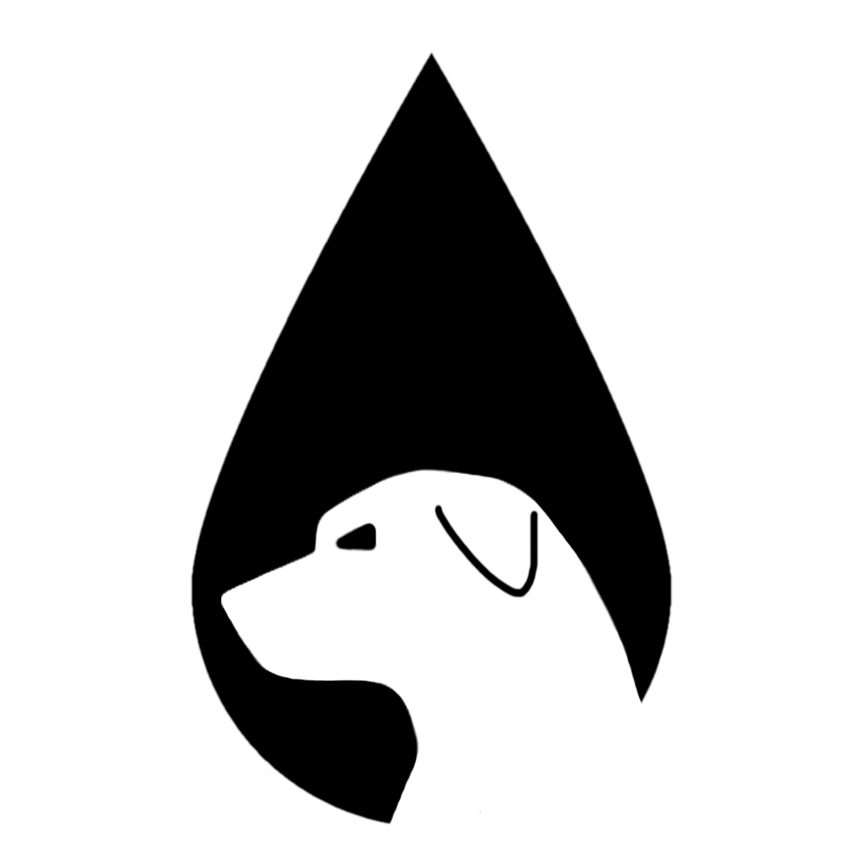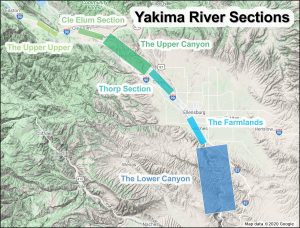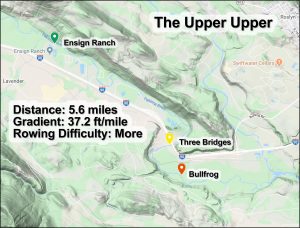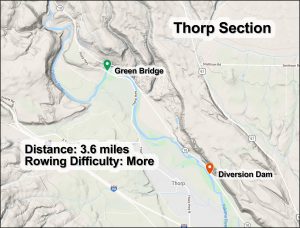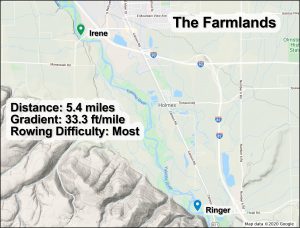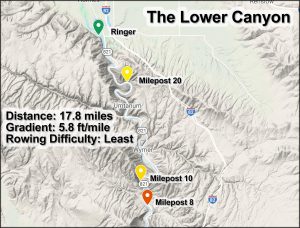Yakima River
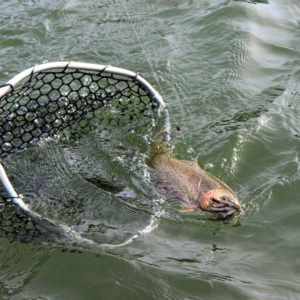
Guided Fly Fishing Trips
Join our professional, polite, and patient guides for a day of fishing on the Yakima River! Clean water, an abundance of healthy trout, and special regulations give this river the label of Washington’s only Blue Ribbon River. Centrally located in the state makes for an easy day trip, less than two hours from downtown Seattle. We pride ourselves in happily working with people of all ages, skills, and abilities to share our passion for the outdoors and the pursuit of fish. The Yakima River is a perfect place to test the skills of a seasoned angler as well as try fly fishing for the first time.
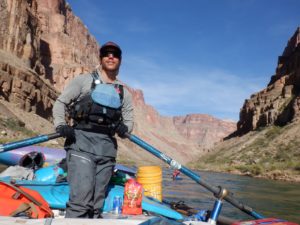
Local Guide Andy Lockey
I love rivers and Reese's. If you ever have questions about the Yakima River feel free to call/text me at 253-381-6539 then bring me Reese's when we hit the river!
What we provide
- Experienced, licensed, insured and certified in both cpr/first aid and swift water rescue guide
- Drift Boat or Raft that can accommodate at least 2 anglers plus guide
- All necessary tackle including rod, reel, line, tippet, and flies
- Storage on vessel for personal items in dry boxes or coolers
What you need
- Washington State Freshwater Fishing License (15yr and older) By Online HERE
- Appropriate clothing for season/weather (further details in trip itinerary)
- Food (snacks/sack lunch) and beverages as desired
- A good attitude!
Couple other things to note, we do not provide a lunch or snacks/drinks. It’s one of the ways we can keep our prices down and we encourage you to support one of our many delicious local businesses by grabbing a bite in town or bring food and drink from home. We don’t have a shop. We certainly have all necessary equipment for you to use, but if you want to purchase any fishing gear we can point you to several great options in the valley. We also offer half day trips and shorter winter trips at reduced pricing. Call or inquire to chat about your next fishing adventure with River Dog Outfitters today!
4 Angler Party Float
Typically there are two ways to fish with all your friends on river, walk and wade or book multiple boats. We have a third option that blends the two. We’ll throw all of us into one boat and primarily fish from shore while floating to all the best holes. A nice way to all hang out together and stretch the legs on some shorelines only accessible by boat. Fishing from the boat is still apart of the plan, we do it all and have fun doing it!
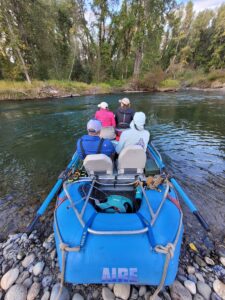
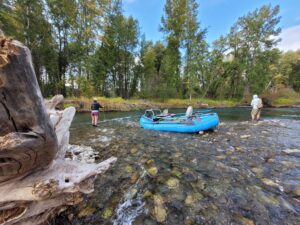
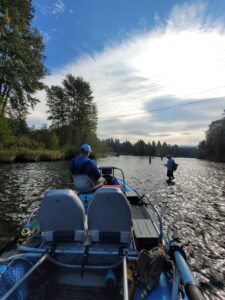
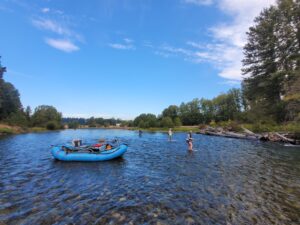
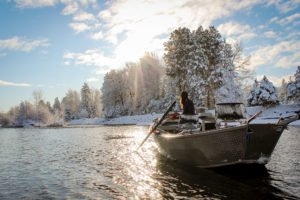
Check these link to see most recent flow information at different points in the system. Listed in descending order, good to check various sections as sometimes the Lower Canyon is “blown out” while the Cle Elum section is running great!
Upper Upper Section
Highest gauge in the Yakima system. This is above the confluence of the Cle Elum and is most likely to be low and clear compared to any other section. Be sure to check the section description below for important hazard awareness with a low bridge that is unrunable above about 800 cfs.
Cle Elum Section
Two gauges to watch here. The Cle Elum River itself is dam controlled only a few miles upstream of its confluence with the Yakima River. Typically it flows steadily and tempers heavy rains or snow melt a bit which can mean the Cle Elum section of the Yakima runs clearer even with extra flow. Also conveniently there is a temperature gauge on the Yakima River near the South Cle Elum boat ramp that you can check online before deciding to put in. It’s sometimes helpful to compare against the Umtanum temperature gauge in the lower canyon to get an idea from top to bottom. The Cle Elum section is almost always colder than the Lower Canyon section.
Upper Canyon and Thorp Sections
You may often see steady flows in the Cle Elum and Upper Upper Sections while at the same time see a spike on the Horlick gauge, the Teanaway River is to blame. A completely free flowing river with miles of clay banks and meandering farmland makes this river run like chocolate milk after heavy rain or snow melt making the Yakima downstream turn brown as well.
Ellensburg Farmlands and Lower Canyon Sections
The Horlick gauge and Umtanum gauge should look fairly similar as there are only a few creeks entering below the Teanaway all the way to Roza Dam. If you are wondering what the river is predicted to do in the next few days check the flow forecast link (note this prediction is just that, a best guess, and being downstream in the system it does not portray all sections). The temperature reading from the Lower Canyon is great to cross check with the Cle Elum section to get an idea of what the system as a whole looks like.
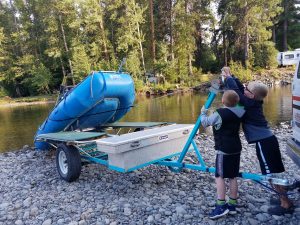
Yakima River Access
The most popular access points on the Yakima River between Easton and Roza Dam. We’ve broken down the river into popular sections to float with put in’s, take out’s, and some intermediate access points with links to google maps. Note that not all access points have boat ramps but consider most do and each have some amount of walk and wade access (details in each section below). Also note that not every access point is listed, can’t give away all the secrets! These are all WDFW or unregulated and for the most part free (with discover pass/access pass), we did not include BLM access in the lower canyon or Red’s Fly Shop for instance as there are daily use fees. Please be considerate to other users, neighboring land owners, and fellow anglers along the Yakima. Pack out trash, use good boat ramp ethics, and have fun fishing!
Not all inclusive..
Here are the sections we commonly float on the Yakima River. You might be wondering what about the Cle Elum confluence? Too often choked with wood makes it hazardous/cumbersome. KOA to Irene? Great section, but there is a launch fee and we’re focusing on the WDFW/free options here. Why isn’t the Lower Canyon broken up into shorter sections, it’s so long! We’ll get into that later. Remember, this is our interpretation of the commonly floated sections and not all inclusive. We encourage you to explore! Maybe you can find a (legal) way into the elusive trout sanctuary that lies below the Thorp diversion dam and above the KOA.
Each section has some basic information:
Put In’s (labeled green), take out’s (labeled red), and intermediate access (labeled yellow) sometimes used for alternate put in/take out or walk and wade access. Each of these points will have corresponding google maps link.
River mileage is distance by water not by road.
Gradient is how steep the river is over the section as an average, gives an idea of current speed.
Rowing Difficulty is our simple attempt to categorize how these sections compare to EACH OTHER, this is in no way a rating to be judged against other rivers. We are whitewater guides, by our standards the Yakima is a simple class 1/2 river from top to bottom and does not demand much from our perspective. For anglers with little to no whitewater experience navigating a river can be a daunting and dangerous undertaking and shouldn’t be taken lightly (higher a guide or take some rowing lessons from us!). Our ratings from Least, Less, More, and Most difficult should give you an idea which section to tackle first to get your feet wet rowing downstream. Let’s get into the details starting from the top!
The Upper Upper is the highest we float in the system
Above the Cle Elum River confluence and fed by the Kachess and Keechelus reservoirs. Compared to the other sections it has the smallest feel. At 5.6 miles long it can be thoroughly fished in a half day (4 hours) and while the currents are typically slower we consider this section to be More Difficult due to its tight maneuvering requirements. Unfortunately this section is usually inaccessible in the winter, both the put in and take out accumulate snow banks from plows blocking access.
Put in near Ensign Ranch, there is a WDFW access site that is hardly listed anywhere but does exists (called Hundley Road Boat Launch on google, it’s a little off target. Follow the WDFW sign to the right of the ranch entrance down a small one lane gravel road). Plenty of space for parking and an easy slope gravel bar to back a trailer down.
The float is beautiful, parts are secluded and intimate with slower currents through boulder gardens and gentle bends. Much of it flows along back yards so be sure to give a friendly wave! Plenty of fishy water, while not 1000 fish per mile like the Lower Canyon there are some dandy’s in this section and the angling pressure is lower than others. Note there is a MAJOR HAZARD HERE at McElroy road, this low bridge can ruin your day at higher flows. Typically recommend 800 cfs at Easton (check this gauge) as a maximum. Of course be on the safe side and drive to the bridge before your float to be sure your boat will fit under. (HAZARD UPDATE: as of winter 2022 the McElroy bridge collapsed, a new span is suppose to takes its place. Unknown what this means for river travel at the moment)
Three Bridges offers an intermediate access point. Concrete blocks make launch and retrieve unrealistic for anything but small light craft, we have taken out rafts here before. Good walk and wade water lies upstream of here.
Take out at Bullfrog, another WDFW site with good parking and a primitive gravel ramp. The river near Bullfrog offers a lot of walk and wade opportunity including a walk down the Palouse to Cascades Trail that will lead directly to the confluence with the Cle Elum River.
Travel downstream of Bullfrog is not recommended unless you are familiar with the most current wood situation, this section has many logjams that block the entire stream bed. From Cle Elum River confluence down is usually clear of logjams into the Cle Elum Section.
The Cle Elum Section, our backyard.
Local guide Andy Lockey lives in Roslyn making this his backyard water. 5.8 miles makes for a fun half day (4 hours) but with tons of fishy water you can really spend all day on this section taking it slow. Consider this section More Difficult due to several tight bends with wood in play, stay on your toes for shifting wood hazards.
Put in at South Cle Elum next to the baseball fields. The boat ramp is very rugged and not recommended to back all the way down. Please don’t be the person who drives down onto the gravel bar then gets stuck and tears up the all ready bad ramp trying to drive out. We’ve had to pull you out before. Just back your trailer to the edge of the slope and bring your boat to the water by hand. Lots of parking (unless there is a baseball game) and lots of walk and wade opportunity both upstream and downstream.
This section most simulates a tailwater river with flows supplied by three reservoirs and no other major tributary upstream. It often runs clear while the lower sections are chocolate milk, you can expect a crowd when that happens. There are many long runs and several pocket water lies making for diverse fishing. Use the Hanson Ponds access as an alternative access. There is a gravel slope onto the gravel bar to launch or retrieve. Please do not park on the gravel bar when it is exposed at lower flows, it is active stream bed and we wish to have the least amount of impact. Parking along the Hanson Pond road is plentiful. Lots of opportunity for walk and wade fishing here as well.
Take out at “State”, east of Cle Elum at the Highway 10 cuttoff managed by WDFW. Floating up to this ramp can be tricky, the currents are swift and a side channel kicks in at the ramp that can push you away at the last second. Take a look before heading up to the put in if its your first time. Like the put in this ramp is very rugged. We’ve seen folks back too far down and tear up this ramp too. In winter the whole lot can become a skating rink, bring a rope and drag your boat up the ramp if needed. Lots of parking and a pit toilet is on site. Walk and wade is limited here unless you bushwhack.
The Upper Canyon is a magnificent section of the Yakima River
At 12.3 miles and little opportunity for alternative access it does require a full day to float (At least 6 hours at a good fishing pace). With the additional flow from the Teanaway River this section starts to feel like the “big broad western river” the Yakima is known to be. Rowing is Less Difficult overall up here, wood is only common at the first couple bends then you get into 11 miles of wide river. There are a couple class 2 rapids on this sections but being so broad it is easy to navigate.
Put in at “State”, the gravel ramp is very rugged. Be sure not to back too far down. For this launch try to be river ready with all your gear secure in your boat, the currents at the base of the ramp are swift. Tying up to shore is doable while you park but best to have hands on so you don’t lose anything. Also you need to be river ready as the most technical part of the float is just downstream. Wood collects at the first bend and can block the whole channel at times. If in doubt, get out and scout! Pull over and walk down to the log jam to see if there is a clear path. Alternatively at summertime flows (about 3000cfs or more) there is a small channel to the right after you launch that is navigable. This hazard and side channel option can be seen on the google map satellite image (note that the wood placement in the image is not current).
After this first crux the river widens up meeting with the Teanaway River and miles of fishy water lie ahead. With rain or heavy snow melt the Teanaway River, being a freestone river, can add a lot of sediment and turbidity to the Yakima. Check the flows, if the Teanaway gauge is shooting up consider muddy water from its confluence down. Swauk Creek, about half way, is another tributary that can further reduce clarity on the Yakima when it runs high. Being a longer section and needing a full day to float helps keep angling pressure off the fish, there are plenty to be found in the Upper Canyon!
Take out at Green Bridge, there is a gravel ramp on the downstream river right side of this bridge on Thorp Highway. The ramp and parking is managed by WDFW. Walk and wade fishing is available along the first bend at this parking area.
The Thorp Section is fairly short
Only 3.6 miles but packs a lot of fishy water. We consider this section More Difficult to row due to fast currents and shifting wood hazards at a couple tight corners, however will say it is easier than the Upper Upper and Cle Elum Sections if you are keeping track.
Put in at Green Bridge, primitive gravel boat ramp and parking lot are managed by WDFW. Being a short section you can really take it slow and fish thoroughly through all the runs, drop offs, and buckets along the way. Geographically we are entering the shrub step and you should notice the pines fading away and hills turning brown. The environmental shift from the upper sections to the lower sections can be seen in water temperature and bug activity. Fishing can be dramatically different when considering this.
Take out above the Diversion Dam at probably the best boat ramp on the whole river! Its a nice ramp but parking is limited so get there early. Just make sure to get out here because the diversion dam is just 300 yards downstream. There is limited walk and wade fishing here along the shoreline upstream of the ramp.
One of the more demanding stretches of the Yakima
This section from Ellensburg to the beginning of the Yakima River Canyon known locally as The Farmlands is one of the more demanding stretches of the Yakima. At 5.4 miles it can be fished in half a day (4 hours) but has plenty of quality water to fish thoroughly for a full day. We rate the rowing difficulty as Most Difficult when compared to other sections of the Yakima. There are many tight corners with heavy current pushing into wood hazards that are always shifting and sometimes blocking the river completely. Take caution rowing this section, the river does not care how experienced you are and can pin you under a log just the same as anyone. With that being said this section may not be considered difficult at all to those familiar, just understand there are real hazards here.
Put in at Irene Rinehart Park next to the Umptanum Rd bridge. The “ramp” is in poor condition these days and has a steep drop off from the black top to gravel bar. Parking with a trailer is limited but plenty of regular parking. Walking upstream of the launch into the riverfront park gains over a mile of shoreline for walk and wade fishing. Many anglers choose this section because of proximity to town and easy shuttle. We appreciate the diversity of water and quantity of fish! Of all the sections this one is probably the most secluded with no roads in parallel and just farmlands along the shore (get it?).
Take out at Ringer Loop Rd, one of the busiest access points on the river. There is plenty of parking with trailers and the ramp is pretty good. Walk and wade anglers do well here with access as far as their legs will carry.
The Lower Canyon needs no added hype
It carries all the traits the Yakima is known for. Big broad western tailwater with long riffles and gentle bends. Miles of grass shorelines dripping with hoppers all summer long. And lets not forget the more than 1000 fish per mile number that gets thrown around. All of this is what makes Washington’s only Blue Ribbon Trout Stream. Going by our listed access you have 17.8 miles to float, a full day to say the least. We list a couple intermediate points but they are both rather close to the put in or take out. There are several other access points in the middle managed by BLM that have day use fees, also Red’s Fly Shop is conveniently about halfway. A small fee gives use of their launch, a little more and they’ll run your shuttle too! For us if we’re going to make the trek to the Lower Canyon we’re going all in for a long enjoyable day on the water. For a shorter day stick to thoroughly fishing from Ringer to Milepost 20 for about 4.8 miles of quality water. Rowing difficulty? Least Difficult, by a long shot. Most dangerous thing is getting hit in the head with a poorly tossed beer from the tube floatillas on a hot summer day. But in all seriousness the Lower Canyon wide, slower flow, and easy to read. There are always dangers associated with moving water, a few logs and sweepers dot the shoreline, but less frequent on this stretch.
Put in at Ringer Loop Rd, just 100 yards upstream is where the river slams into Manastash Ridge and begins cutting into the canyon below. The ramp here is pretty good and there is plenty of parking. Lots of walk and wade access too.
As said earlier we mention just the WDFW and free access points making the Lower Canyon a long haul. There are just two intermediate access points that aren’t BLM or privately managed, first is Milepost 20. An unimproved slope to the waters edge for a ramp and roadside pullout for parking, it works. Next access downstream managed by WDFW is Milepost 10, the road parallels the river so it really is just over 10 miles between these two points. Here there is a small gravel ramp and ample parking. Note that throughout the Lower Canyon are infinite walk and wade opportunities with minimal private land and plenty of roadside access.
Take out at Milepost 8, just two more miles downstream and above the still waters of Roza reservoir. Good gravel ramp and good parking.
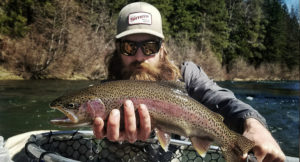
Yakima River Fishing Reports
We try to get reports out as often as possible. To stay up to date we recommend following our social media and check our blog for the latest reports!
